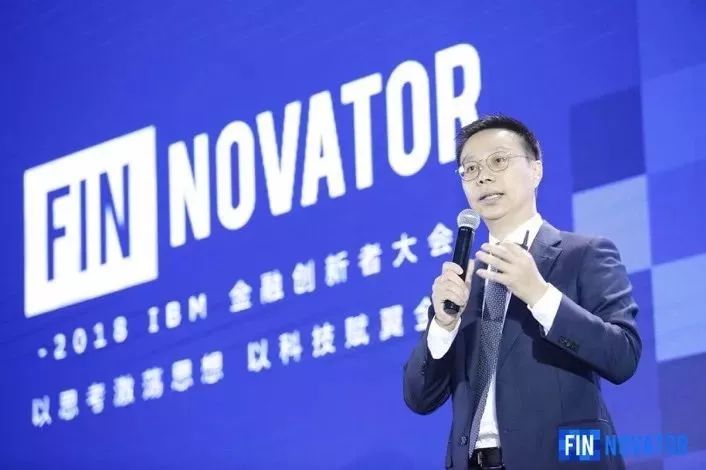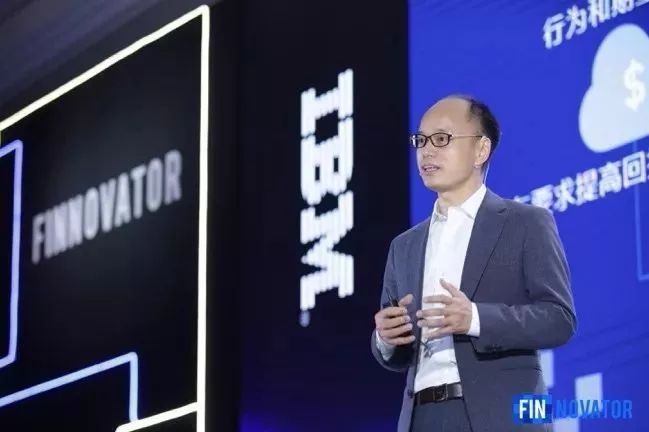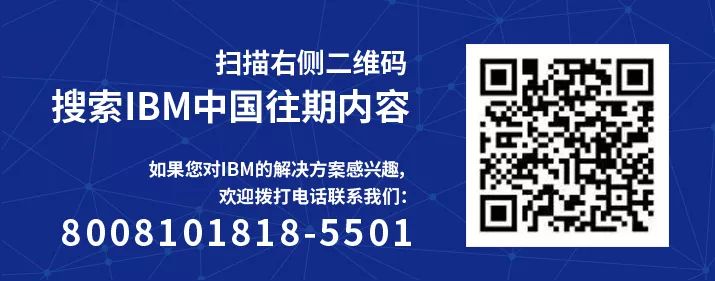This article is reprinted from the IoT Think Tank, author: iot101 Jun
—— [Introduction] ——
Innovative bankers have begun to seek and implement transformations such as platform shaping, mining data gold mines, collaborative innovation, and reshaping employee skills, marking the beginning of a comeback. The banking industry will not be disrupted; instead, it can thrive in the new era by leveraging advantages that some Internet companies do not have.
Imagine how terrifying it would be when an 18-wheeler truck loaded with goods comes speeding toward you on the highway?
Traditional industries represented by banking have felt such pressure in recent years—they fear that new competitors will burst into their territory like a speeding truck, using the “disruptive innovation” sword of the Internet to challenge their traditional business from different angles, dismantle their value chains, erode their markets, and ultimately sweep them out.
Indeed, Internet financial giants like Ant Financial and JD Finance, as well as Internet financial innovations such as P2P lending, equity crowdfunding, and Internet insurance, have made traditional bankers feel worried and anxious. However, as the saying goes, “disaster can turn into fortune”; the fierce cross-border competitors have also promoted their top-down and outside-in awakening and transformation. The banking industry continues to move forward, but the way banks operate and even the entities executing banking business are changing. Traditional bankers, continually impacted, educated, and guided by emerging Internet companies, have realized that they must establish a new digital order and rules for the industry in a painful yet necessary way.
On August 3, 2018, at the “2018 IBM Financial Innovator Conference,” IBM released the industry research report “2017 Global Senior Management Survey Report – The Comeback of Traditional Enterprises” and the expert insight report “Innovative Spirit, Riding the Waves Forward – Traditional Banks Marking the Start of Their Comeback.” The report pointed out that innovative bankers have begun to seek and implement transformations such as platform shaping, mining data gold mines, collaborative innovation, and reshaping employee skills, marking the beginning of a comeback. The banking industry will not be disrupted; instead, it can thrive in the new era by leveraging advantages that some Internet companies do not have.

Guo Rensheng, Vice President of IBM and General Manager of the Financial Industry Department in China
The Alluring Platform Model
Which company does not want to become Amazon or Alibaba? They connect supply and demand directly through platforms, effectively creating value by reducing intermediaries and establishing industry monopolies. On average, platform organizers experience faster revenue growth and higher profits than other business models.
In the financial industry, Internet innovation companies have also had a certain degree of impact and shock on traditional banking through platforms. For example, when Ant Financial was founded in 2014, Jack Ma’s statement, “If banks do not change, we will change banking,” caused a stir in the industry. Later, Alipay silenced many skeptics. In addition to Alibaba, Tencent and Baidu have also entered the mobile payment market.
Compared to traditional banks, why do emerging Internet companies run so fast? How did they quickly scale up? How do they rapidly iterate their products and services based on market demand? A key reason is cultural differences. Internet companies can take on massive risks and face lighter burdens on regulatory compliance, while banks aim to be “century-old stores.”
However, this aspect is also an advantage of traditional banks. Because of the uniqueness of the financial field, financial platforms cannot merely connect supply and demand; more importantly, they must be able to operate sustainably, manage risks, and create value. When it comes to providing complete financial services, the funding advantages and risk management capabilities of banks are unmatched by emerging technology financial companies. The journey of P2P platforms in China from prosperity to massive failures is the best proof. As the state strengthens risk control over Internet finance (for example, requiring third-party payment companies’ client reserve funds to be held by the People’s Bank), the business advantages of banks become even more prominent.
Openness and Willingness to Adapt are Key to Building Platforms
Technology is neutral; since Internet innovation companies can utilize platforms, traditional banks can also implement digital platform strategies and initiate transformations. On platforms, traditional advantages will be broken. Traditional advantages primarily come from the value created by technology and patents, while platform operators must advocate a spirit of reciprocity—customers and enterprise networks on the platform create value together and share the benefits.
Chen Wen, Partner of IBM Greater China Global Enterprise Consulting Services and General Manager of Financial Services Industrystated: “Openness and willingness to adapt are the fundamental starting points for building platforms. In the process of openness and willingness to adapt, a competitive ecosystem will ultimately be formed, so platformization represents a change in mindset, and willingness to adapt is the most important keyword.”

Chen Wen, Partner of IBM Greater China Global Enterprise Consulting Services and General Manager of Financial Services Industry
Openness means integrating competitors into one’s value proposition, while willingness to adapt means giving up a certain degree of control over customers in exchange for greater benefits.
Six major banks in Canada (Bank of Montreal, Canadian Imperial Bank of Commerce, Desjardins Group, Royal Bank of Canada, Scotiabank, and TD Bank) jointly established a digital identity verification service on a blockchain platform. Each bank contributed the customer identity attributes that must be retained to comply with “Know Your Customer” regulations. Customers can verify their identities with new service entities (such as utilities or landlords). Banks charge transaction fees to suppliers participating in the platform; suppliers can save time and costs in processing new customers; and customers can easily complete operations through mobile applications. This is a classic example of achieving win-win through the spirit of platform openness!
In 2017, nine banks in Europe jointly established a joint venture we.trade, with IBM providing technology and operational services to build an open cross-border trade platform. Financial giants like Deutsche Bank, HSBC, and Rabobank are testing blockchain-driven bank transfers. This special test is a continuous cross-border, multi-bank, interoperable remittance project. Throughout the work week, ten companies conducted transactions on the we.trade platform, utilizing four different banks from five countries. The participant list includes well-known brands like Santander, Societe Generale, and KBC, with transactions spanning eleven European countries, including France, the Netherlands, Sweden, the UK, Spain, and Germany.
Cooperation can also be reached between banks and Internet companies. On November 27 last year, the Industrial and Commercial Bank of China and JD Finance held a joint press conference in Beijing to announce the launch of “ICBC Xiaobai” digital bank, which is the first bank in the domestic banking industry to be opened on an Internet platform; on August 1 this year, Minsheng Bank reached a strategic cooperation agreement with China Mobile IoT to implement Internet of Things financial strategies through the application of China Mobile’s eSIM technology in smart payment terminals, as well as the integration of the cloud platform oneNET and the IoT card management platform CCMP with Minsheng Bank’s business data platform, further optimizing the management of IoT devices and card data, and jointly promoting the development of IoT applications and big data in the financial industry.
In other words, for consumers, the external manifestations of the platform have not changed, but the underlying value chain has been restructured, resulting in more professional and detailed divisions of labor. Through platform strategies, banks will no longer have a “zero-sum competition” relationship with each other, Internet companies, and other cross-border competitors; instead, they can leverage each other’s advantages to engage in collaborative innovation and mutual growth.
New Tools for Mining Data Oil
Even under the impact of products like Alipay, traditional banks have not become weak players, as they possess data treasures that Internet companies do not have. Look at the four major state-owned banks; which one does not have tens of millions of corporate clients? Which one does not have hundreds of millions of depositors? As information intermediaries, banks have accumulated deep knowledge of each enterprise’s financial data and operational status, as well as each depositor’s credit status through years of interaction with clients. This data itself is an endless source of wealth, but in the past, it was like crude oil buried deep underground, unprocessed and unrefined, failing to realize its potential value.
Why couldn’t traditional banks meet the massive financial demands of various industries in the real economy in the past? Because many of those demands could not be effectively and cost-efficiently assessed for risk by traditional banks. In other words, banks possess data oil but lack the tools to extract and refine it. Now, with the emergence of numerous new digital technologies, such as artificial intelligence, blockchain, IoT, and cloud computing, banks can leverage their years of accumulated industry knowledge and experience to extract insights from the data.
For example, a tire company receives fixed orders from major clients every year and has reliable delivery period contracts; however, it lacks sufficient funds to organize tire production in advance, thus urgently needing financing. However, due to banks’ lack of effective, low-cost means to manage risks, financing for such supply chain financial needs has historically been difficult to obtain from banks, resulting in missed opportunities. Now, through technologies like blockchain and IoT, banks can effectively verify the authenticity of orders and monitor the execution process through data analysis, thereby achieving manageable risks. Therefore, under the new circumstances, banks can effectively engage in such low-risk financial businesses by adopting new technological means.
In the future, banks may even “disappear”…
As times change, the business forms of banks are also gradually evolving.
When I was young, banks had high counters, and we were outside while tellers were inside; later, banks became narrow cards, and we were outside while money was in ATMs; now, banks are thin mobile phones, and we are outside while money is in apps; in the future, banks may disappear, quietly embedding themselves into various life scenarios. When we fly, buy movie tickets, travel, eat, or see a doctor, banks will be silently providing financial services in the background.
Guo Rensheng, Vice President of IBM and General Manager of the Financial Industry Department in Chinastated during a speech: “The financial industry is facing new challenges; their customers have different needs from before, requiring more personalized and scenario-based services.”
However, new challenges also mean new opportunities. Traditional bankers need to strengthen their advantages to respond agilely; this requires a shift in mindset, changes in operational methods, and a transformation of traditional banking application architectures.
Industrial Bank’s holding subsidiary—Xingye Digital Finance continues to innovate in technology. The company has two major development veins: one is to continue development, building on the foundation of technology output from bank-to-bank platforms, strengthening financial cloud services to provide comprehensive financial industry cloud services for small and medium banks, non-bank financial institutions, and small and medium enterprises; the second is to break through innovation, creating an open banking platform, developing micro-innovations through open interfaces, and becoming a connector between “bank-end” and “client-end.” Xingye Digital Finance has also launched Internet-based digital banking cloud services, integrating mobile banking, direct banking, and other Internet banking functions, seizing the Internet entry points of partner banks, and building an industry-specific Internet financial platform.
In summary, technology is changing, but the essence of financial business has not changed; the way financial business operates has changed, but the essence of customer demands has not changed. Banks have a huge opportunity to leverage new technologies to penetrate financial services into every aspect of people’s lives. If digital transformation is about expressing all business activities through digital means, then digital restructuring is about building new business models, collaborative systems, and value chains.
The banking industry is on a broad avenue from digital transformation to digital restructuring.

